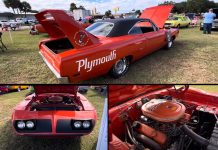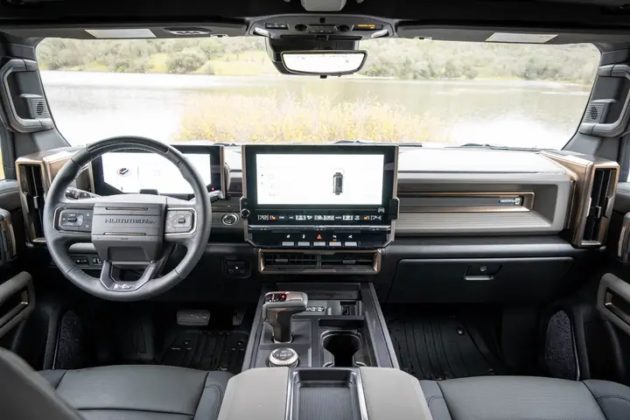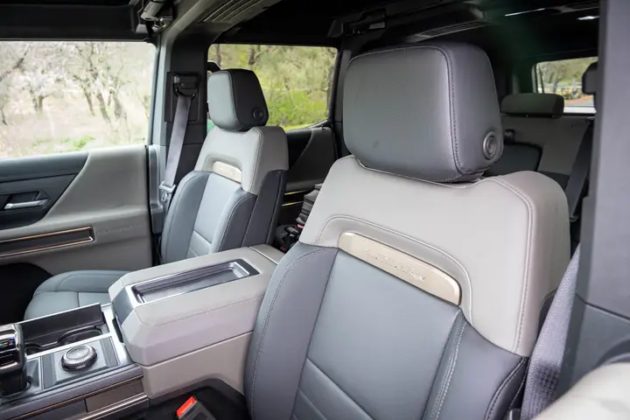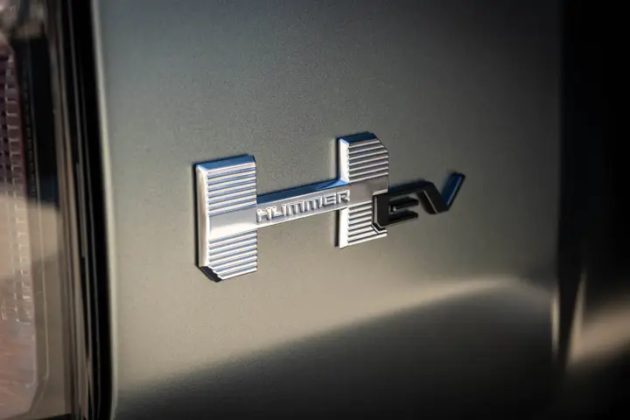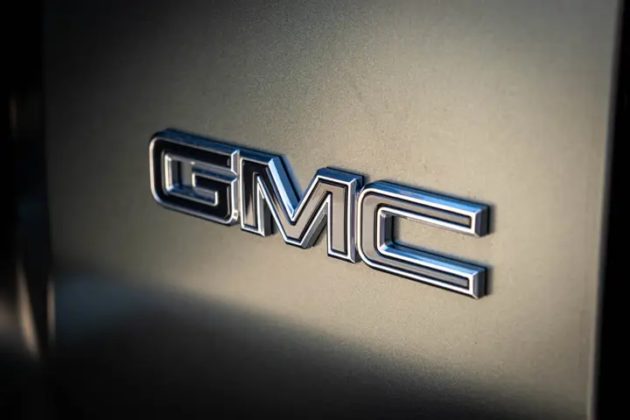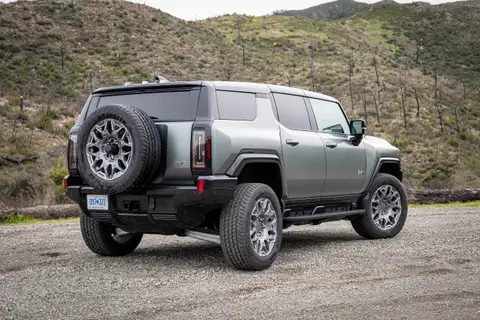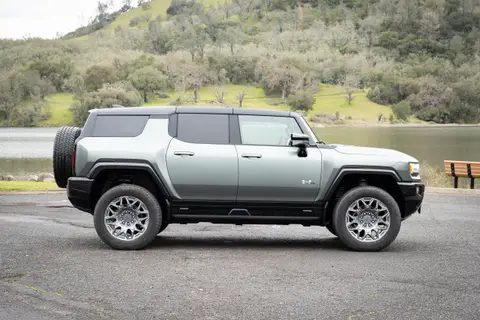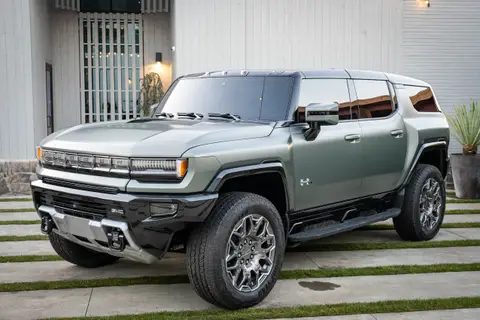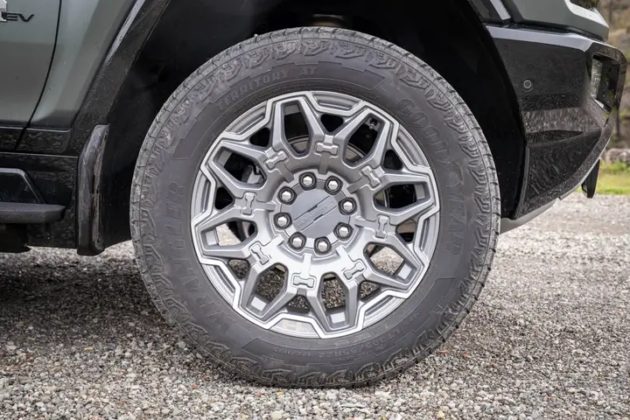The 2024 GMC Hummer EV SUV makes a case that it can be more than just a car. That’s from GMC engineers themselves when they call it a “supertruck,” and attest that the ultra-wide, ultra-tall, ultra-everything all-electric SUV offers more. More than competitors. More than a car. Just, more.
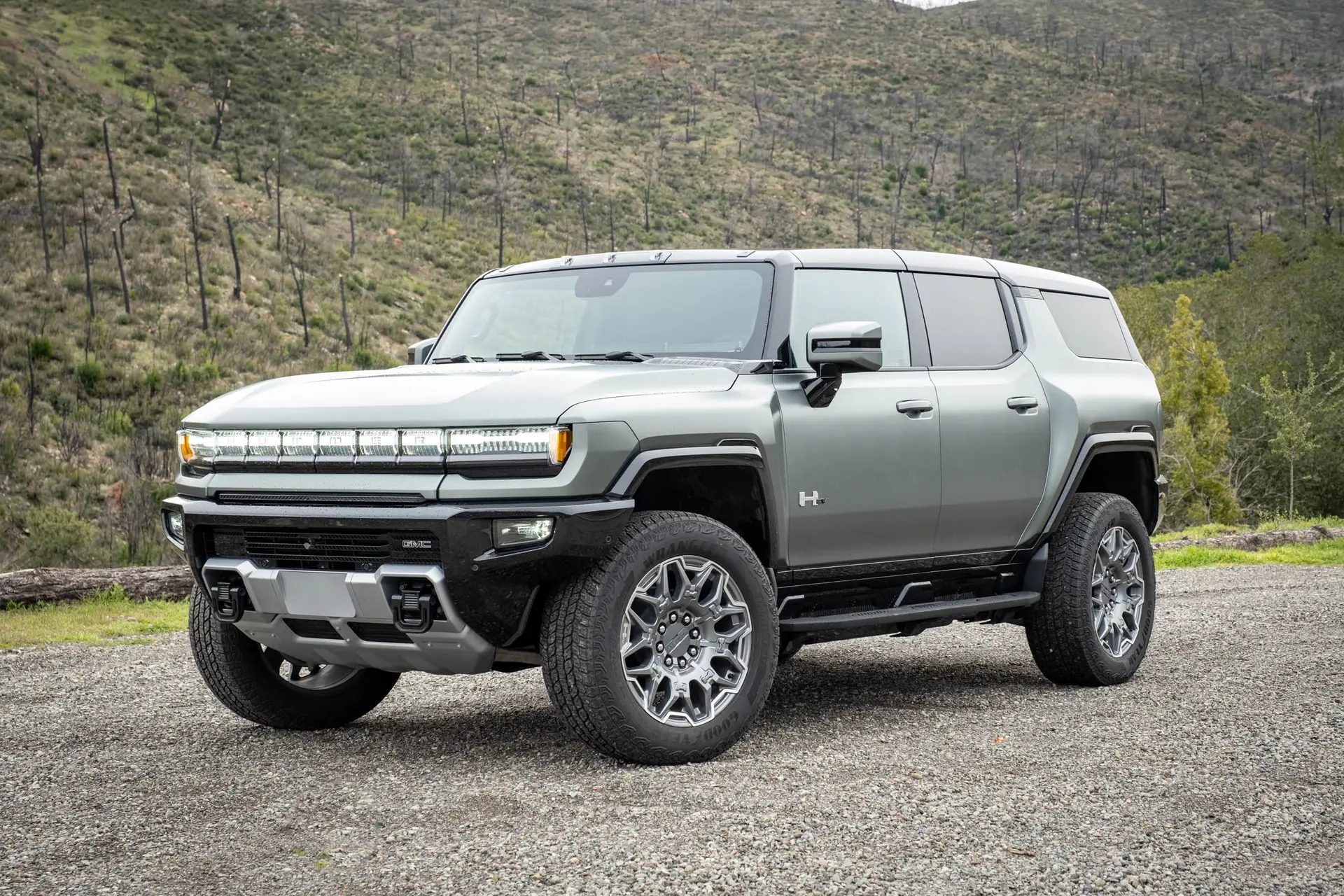
In a sense, they’re right. Few vehicles captivate like the super-sized Hummer EV does now. It turns heads—usually followed by a smile or a finger, pick one—and befuddles passersby in parking lots and sidewalks. It commands the attention of drivers, too. Other people pay attention because, well, they don’t really have a choice.
Everyone is right here. For GMC, the Hummer EV is more than a car: it’s marketing. Every one of them on the road is an instant marketing machine, reminding everyone within the truck’s orbit General Motors made an all-electric rolling roadblock. It’s a conspicuous consumer of current and its all-too-present, on-trend package is a testament to our temple that worships what’s very now—more is more.
All of that figures into my mind after taking the Hummer EV SUV for a spin around Northern California. It’s easy to poopoo it without driving and seeing it, of which I’m guilty. It’s just as easily lust-worthy because it’s awesome in the literal sense of that word. I’m guilty of that too. It’s inescapable that the Hummer EV SUV is more than a car, but what’s just as unavoidable is that as a car, it leaves a lot on the table.
Here’s why.
2024 GMC Hummer EV SUV Specs
- Base price (as tested): $79,995 ($110,595)
- Powertrain: 205-kWh lithium-ion battery | tri-motor four-wheel drive | 1-speed transmission
- Horsepower: Up to 830
- Torque: Up to 1,200 lb-ft
- Seating capacity: 5
- Towing capacity: 7,500 pounds
- Cargo volume: 35.9 cubic feet behind second row | 81.8 cubic feet behind first row
- Range: 300-plus miles (manufacturer estimated)
- Quick take: It’s the SUV we knew it’d be, for better or worse. Its value to GM may be marketing more than a complete family vehicle.
- Score: 6.5/10

Hummer’s back, if you haven’t gotten the memo yet, and it’s evolved far from the military mindset it entered the world with in the 1990s. It’s not the banner boy or girl for petroleum-based conspicuous consumption anymore, it’s the banner boy or girl for EV excess for now. That the Hummer EV SUV is inefficient with electrons isn’t news to GMC; my observed efficiency behind the wheel for nearly 200 miles managed only 1.3 kWh per mile, roughly four times the average rate for most EVs, which amounts to a moot point for GM CEO Mary Barra and President Mark Reuss.
Peel back the blocky, boxy, bold, and brash look and what’s left is an SUV that’s nearly identical to a Ford Ranger at 126.8 inches between the hubs, and almost the same length as a Subaru Ascent at 196.8 inches stem to stern, both of which are relatively anonymous on the road. Of course, the Hummer EV’s massively wide and tall stance is almost incomparable, but its overall package isn’t exactly foreign. Compared to the Hummer EV Pickup, the SUV has a shorter wheelbase by 9 inches and shorter overhangs. Aesthetically speaking, the Hummer SUV is the better of the bunch, according to my eyes, but only because the pickup’s short and tall bed looks out of place.
The SUV is instantly recognizable on the road when it isn’t blocking the sun for every other car on the road. It hits all the perfunctory notes for a family brute ‘ute: blocky looks, chunky wheel wells, swole fenders, and a light bar up front that’s three lumens short of lighting up the nearest little league field on a Saturday night. It’s also not especially practical. Outward vision ranges from bad to worse, and the rake on the front windshield ensures replacement windshields for the Hummer SUV will always be in short supply.
Inside, the decisions made by GMC are just as questionable. Every material from the waist down feels thin, sounds hollow, and is questionably finished. Above the beltline? It’s a mishmash of easily scratched plastics, a 13.4-inch touchscreen, switches and knobs that confound more than they help. Oh, and the removable roof panels flex when any of the doors close and direct rain or moisture from the flat surface straight down into the windows or doors when they open. The Hummer EV SUV Edition 1 I drove had only a few hundred miles on the clock, but the bronze-colored plastic inside looked like some of those miles may have been traveling in a meat grinder. Turning on or off the heated and cooled seats uses no less than three toggles on the climate controls, for some reason. And the drive select shift knob scrolls through the settings easily enough, and touching the directional pad up or down raises or lowers the suspension by several inches. Tap left and you can control rear-wheel steering. Tap right? That brings up an email address in the driver display with a prompt to tell GMC what you’d like to see in your new car. It’s a Contact Us page, except less useful and looks just as hastily assembled.
None of the above is a surprise, nor does it change much about the Hummer EV SUV. Nitpicking the polish of an SUV that shocks like swearing during communion isn’t the point. The powertrain and its novelty are. For that, the Hummer EV SUV tells the world that you’re in line to receive spirit like we’re all at a tent revival. The Hummer SUV packs the same powertrain as the truck: three electric motors that make up to 830 horsepower, up to 1,200 lb-ft of torque, 13 inches of suspension travel, four-wheel drive, four-wheel steering (CrabWalk), and a 3.5-second sprint from a standstill to 60 mph. Oooh weeee. The Hummer SUV packs the same 200-kW battery as the pickup, but in a slightly different formation due to the shorter wheelbase. Driving the Hummer is exhilarating, terrifying, hilarious, exhilarating, terrifying, and you get the point.
The SUV suffers from the same affliction as the pickup: power is prolific, but the steering is positively ponderous. The SUV is exhausting to drive not only because it’s easily much bigger than just about everything else on the road with limited outward vision, but also because the light steering and massive body dynamics require more attention than sitting down to take the ACT. There’s more head toss than the SATs, too.
What’s notable in the Hummer SUV’s drive is how nimble it can be. Thanks to four-wheel steering, the Hummer SUV can make a U-turn practically in my back pocket. Imperceptibly light steering may be suboptimal for highway speeds, but it’s a dang delight at low speeds when you’re asking a heavy and humongous SUV to tap dance around a CVS parking lot.
Like the original Hummer, it’s too easy to deride the big SUV for being everything we knew it’d be. You could say the same about anchovies and movies with Bill Murray. Rather, the Hummer SUV requires capitulation and contextualization before the barbs begin to fly. The context is this: GMC says Hummers are sold out for the next year or more, with most of the SUVs or Pickups commanding five-digit markups that most people couldn’t fathom on a truck that easily costs six figures. I suspect that constraint is supply-related and also serendipitous: The Hummer SUV isn’t great as a regular SUV. General Motors’ best foot forward on electric SUVs is yet to come with the Chevy Blazer, Equinox, and others.
The 2024 Hummer SUV starts at $79,995 but doesn’t stay there long. “Base” versions of it will be harder to spot than Bigfoot, with most of the models on the road stickering in at more than $110,000 like the Hummer EV SUV Edition 1 I drove. I’d steer clear of the off-road package and its chunky 18-inch MT tires only because the roar is audible and, well, tiring. Compared to the Rivian R1S, which starts at $73,575 the Hummer’s premium is pure vanity—and that’s fine. The R1S blends in well with other cars on the road, and that’s the point. The Hummer? You’ll get looks.
The Hummer SUV also asks for a capitulation from its owners in that it’s not easy to drive, not especially practical as an SUV, not efficient, and not completely finished. Even GM proclaims that the regular timeline for development was halved for Hummer, which doesn’t mean that they should have delayed its release—this SUV coming out two years from now would be buried by competition—but it does mean that it’s not a finished product. It shows.
So when is a car more than a car? For now, the Hummer SUV is more than a car because it’s a marketing exercise. Every one on the road will be a reminder that GM can repackage excess into something that resembles responsible excess, and every one is a rolling billboard for its upcoming Blazer and Equinox EVs that’ll hopefully be more practical, more affordable, and better.



